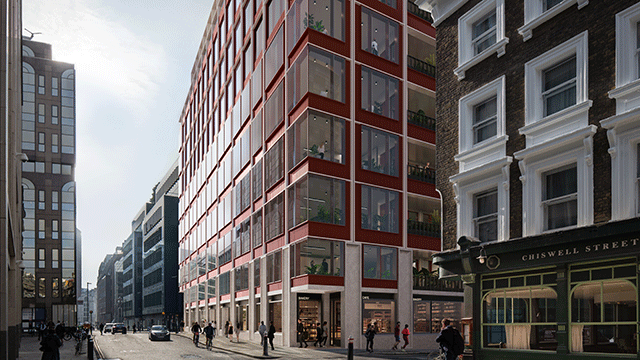Landlord and tenant – Lease of commercial premises – Tenant’s fixtures – Whether respondent tenant entitled to remove fixtures during currency of lease – Whether that precluded by covenant against alterations – Whether wording of covenant sufficiently clear to displace right under general law to remove tenant’s fixtures – Appeal allowed
In 2012, the respondent took an assignment of a lease of a steel recycling plant on the Isle of Sheppey on acquiring the business and assets of the tenant. The respondent was the landlord under the lease, having acquired the reversion in 2008. The lease had originally been granted by the port authority in 1971 for a term of 125 years from 1968, on terms that required the tenant to erect a new building, consisting of a fully-equipped steel-making plant and rolling mill capable of producing not less than 50,000 tons of steel products a year. It had subsequently been varied to include, in clause 2(6), a tenant’s covenant “not at any time during the said term to erect make or maintain or suffer to be erected made or maintained any building erection alterations or improvements nor to make or suffer to be made any change or addition whatsoever in or to the said premises save in connection with the use of the said premises for such industrial purpose as may from time to time be approved by the lessors…”.
A dispute arose between the parties as to whether the respondent was entitled to sever certain items of plant that were identified in the lease as tenant’s fixtures and to deal with them as the legal and beneficial owner. It was common ground that the respondent was entitled to remove those items at the end of the lease pursuant to its express terms. However, the appellant disputed the respondent’s entitlement to remove them during the currency of the tenancy, arguing that clause 2(6) precluded their removal save in connection with the use of the demised premises for such industrial purpose as it might from time to time approve.
The appellant’s claim for a declaration in its favour was dismissed in the court below. The judge held that clear words would be required in order to override a tenant’s entitlement under the general law to remove tenant’s fixtures and that the wording of clause 2(6) was insufficient to achieve that effect: [2013] EWHC 1658 (Ch); [2013] PLSCS 139. The appellant appealed.
Held: The appeal was allowed.
A tenant’s fixture was a chattel that was annexed by a tenant to the land, whether for the purpose of his trade or for mere ornament and convenience, and was physically capable of removal without causing substantial damage to the land and without losing its essential utility as a result of the removal. Although a tenant was, in principle, entitled to remove any tenant’s fixtures, that right could be modified or excluded by the terms of the lease. There was no rule of law that especially clear words had to be used in a lease in order validly to oust a tenant’s right to remove fixtures during the term, nor was there any requirement that the language used should expressly impose such a restriction. All that was required was language that, on its ordinary construction, had such an effect. If the provision in question was ambiguous and had two or more equally possible meanings, the process of construction would take into account the policy of the law that tenants should generally be permitted to remove their trade fixtures, such that, other things being equal, the provision was likely to be construed as not interfering with the tenant’s right under the general law. However, the wording would be sufficiently clear to displace the tenant’s right if, on normal principles of construction, that was determined to be the proper meaning of an unambiguous provision in a lease: Lambourn v McLellan [1903] 2 Ch 268 and In Re British Red Ash Collieries Ltd [1920] 1 Ch 326 considered.
The fact that the tenant’s fixtures had been installed on the premises in compliance with its obligations under the lease did not affect the tenant’s entitlement to remove them. Some other provision in the lease was required to preclude that right. Clause 2(6), properly construed, had the necessary effect. A central commercial obligation under the lease was the imposition on the tenant of the covenant to build and equip a steel-making plant. The effect of clause 2(6) was to prohibit any alterations or changes to the building and plant erected in compliance with that covenant, save in connection with the original steel-making use and, as amended, any industrial purpose permitted from time to time. In that context, the “said premises” to which clause 2(6) referred, and to which alterations were precluded, had to be construed as including new buildings erected on the site and, similarly, any new fixtures that might be installed on the site. It would be commercially unrealistic to read clause 2(6) as applying only to the original buildings and the site in their respective original states at the time when the lease was granted. In clause 2(6), “the said premises” was a reference to the buildings and site from time to time. It therefore included the new building and plant, including the fixtures, whether landlord’s or tenant’s, that formed part of the demised premises. It followed the tenant was precluded from removing any tenant’s fixtures during the currency of the term, save as permitted by the proviso to clause 2(6).
Jonathan Seitler QC and Tiffany Scott (instructed by Gordons LLP, of Leeds) appeared for the appellant; Kirk Reynolds QC and Greville Healey (instructed by McGuireWoods London LLP) appeared for the respondent.
Sally Dobson, barrister






